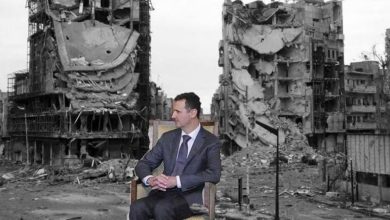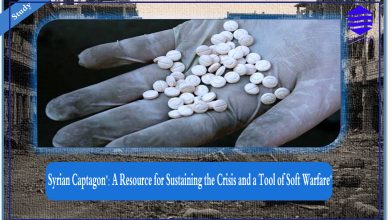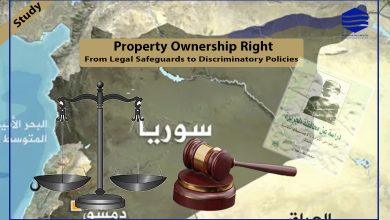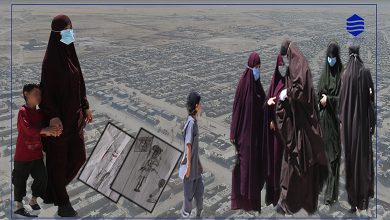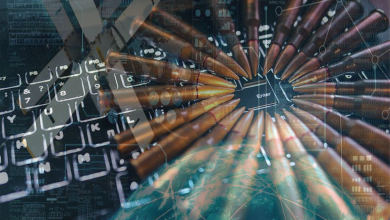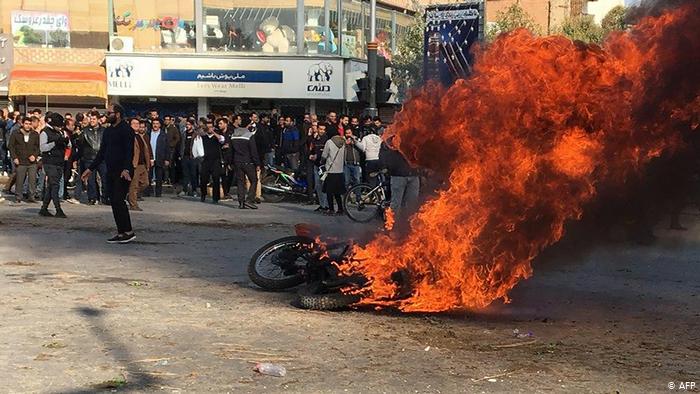
Gasoline Protests sets Iran Streets on fire
Al-Furat Center for Studies-Translation Department
Also available in Arabic.
A wide range of popular demonstrations has erupted in most parts of Iran, following the resolution of fuel rationing and gasoline price hike up to %200 percent. National Iranian Oil Products Distribution Company (NIOPDC) without a prior declaration announced about fuel rationing, in which the price of 1 Liter of Gasoline has risen from 1000 Toman(less than 9 cents) to 3000 Toman (25 cents) on the midnight of Friday on 15 of November.
This decision came as a surprise and shock to the Iranian society in the light of these critical economic times that the society has been suffering and the fall of the Iranian currency. Hassan Rouhani has circumvented from this resolution in this critical time, as he made it clear that this resolution has been approved by the three State powers: legislative, executive and judicial. He has authorized the implementation of the resolution and the date of issuance to the National Security Council and who is the one that issued the resolution on Friday, without informing him.
The Supreme Leader Ali Khamenei has supported the resolution, and protests were immediately followed this resolution in all the cities of Ahvaz, Tehran, Mashhad, Shiraz, and other ones, and it has quickly moved to other cities such as Isfahan, Kerman, Qazvin, Tabriz, Mariwan, Kermanshah, and Sanandaj…
The Feature of the Protests
The spark of these protests has launched spontaneously from Ahvaz and the poor neighborhoods in some cities and countrysides of Tehran; they were purely peaceful, denouncing Gasoline price hike, and it has taken the form of cutting off streets and highways, and parking cars in these streets and refraining from running and moving. However, it has soon caught fire and has turned into wide range protests against the Islamic Republic and its religious leaders including the Supreme Leader Ali Khamenei, because of opening fire against the protestors.
These protests were accompanied by waves of violence which was reflected in big acts of vandalism and burning of banks, police stations, fuel stations, the Headquarters of Basij forces, which is specialized in suppressing movements, along with burning religious Hawzas and the offices of Vali-ye Faqih(Guardian jurist), Imams, and Friday’s Breachers. This is a clear indication of the resentment of Iran’s young generation from the religious nature of the Authority and intrusion religion in the smallest details of the daily life of Iranian citizen, and the popular outburst has inflicted a great deal of destruction to the infrastructure of many cities. Some activists reportedly accused the elements, who belong to Iranian Regime, of contribution in vandalism acts and burning. In order to legitimize the use of force and the suppression against demonstrators, voices within Iranian Parliament also did not exclude such thing to happen, similar to what Iranian M.P. Mahmud Al-Sadiqi has revealed.
With the expansion of the protests, which have spread in 28 provinces out of 31 and more than 100 Iranian cities, according to Iranian government sources; especially in these sensitive conditions that it is passing through in the light of diplomatic and economic tensions with the US.
These protests have lasted for nearly one week, but they have been considered as the most violent protests Iran has seen with last 10 years. So that, US Special Representative for Iran Brian Hook described these protests “the worst political crisis of the Iranian Regime since 40 years” as he stated. While, Ali Fadavi: deputy commander of the Islamic Revolutionary Guard Corps (IRGC) has resembled to “ Karbala 4” operation in Iran-Iraq War in terms of the risk of these protests on the Islamic Republic.
How did the Authorities control these protests?
Iranian leaders’ statements, which described, the demonstrators once they came down to the streets, as “ evils” considering them in contact with the Iranian opposition in the exile; especially, the People’s Mojahedin Organization. In addition, as “Country’s enemies” such as Saudi, US, and Israel, without listening to their voices and demands, this reveals about the Iranian Regime’s determination to face and stifle these protests at all costs.
Security forces, police forces, Basij and the (IRGC) have used excessive violence against the demonstrators and targeting them throughout live-fire shooting and the abduction of their dead body. According to some of Iranian political analysts that the Authorities have already prepared itself to confront possible protests since more than one year, in which it was conducting training for Basij elements its affiliated-battalions on the confrontation of the protests once it has erupted.
Owing to difficulty of accessing to precise information concerning the numbers of the victims of these protests, because of media blackout and internet disconnect. Numbers have differed regarding the victims numbers; according to the latest report of the Amnesty International Organization that issued on December 16th, 2019, the death toll has raised to 304, while “ al-kelimah” site, which is close to Mir Hossein Mousavi, the leader of reformist Green Movement, has announced about (366) casualties. While opponents abroad have estimated that at least (1500) persons have lost their lives during the protests, but the Iranian government has refrained of publishing an official statistics about the number of victims and has just refuted the statistics that have come out from abroad the Country.
Although the protesters’ demands were one all over the country, which was shown throughout the slogans that they were launching. The security engagement was varied, those cities where protests have been intense, confronted with more repression rather than the other areas; in which the protesters have just been confronted by tear gas and live-fire shooting in some cities. While Tanks have went down, for the first time since the Islamic Revolution, to the streets of some towns such as Taleghani town in the city of Mahshahr, south of Al-Ahwaz. The Revolutionary Guard forces have opened fire against protesters by using medium-weapons and Helicopters, and dozens of the inhabitants of the town have lost their lives. The inhabitants have fired-back because of the tribal nature of the region and its individuals have weapons, and bloody clashes have occurred between both sides, which have left dozens of casualties from civilians and Revolutionary Guards elements.
The remarkable thing is that the Iranian Regime has confessed that dozens of demonstrators have been killed in this city, owing that to the protesters’ attempt, allegedly to destroy the main lines of the energy transport. Moreover, this city has big economic importance; it includes the largest compound for Petrochemicals in Iran and the largest oil reserves in Iran.
In order to control these demonstrations in this sensitive time that the Islamic Republic is going through, the Authorities have disconnected the internet service and cellphones’ network, to undermine the influence of the protests and to prevent any kind of coordination amongst the demonstrators. Which could lead to demonstrations of millions to come down to the streets and squares the same way as happened in 2009 during Green Revolutions in the Country.
Iranian Authorities have also used other means: like arrests, threatening the protesters with punishments up to death penalty, and others attempt for the defamation of the popular movement throughout broadcasting of confessions belong to some youth whom have been arrested and have been forced to confess of receiving instructions from abroad in order conducting these protests. Furthermore, the authorities have worked on Media blackout and preventing Media outlets from covering the ongoing incidents in the Country and direct threat to the families of workers in the Media platforms and the TV channels running abroad, which sought to highlight on Iran’s interior and the movement of protests and its repression by the Authorities.
The statement of Iranian President Hassan Rouhani, concerning the possibility of going back to negotiation with the US, on condition that the latter cancels the economic sanctions imposed on it, could be included in the protests confrontation field, this is to ensure that the US does not support protests movement.
Has Gasoline really caused the eruption of these protests?
There is no doubt that there were many accumulations and pressures have led to these protests; the Gasoline price hike was a direct reason to light the ember of the Iranian people that has not faded beneath the ashes.
If we had looked carefully into many protests movements around the world, we would have seen that factors might be simple, at first glance, cause to the explosion of peoples’ wrath if it comes at a time when popular wrath and rage at its peak: internet tariff increase in Lebanon; the subway tickets in Chile; a good example in this regard, is the opposition to the fuel tax that has led to the eruption of Yellow Vests protests in France.
We could extract the main reason, which it has the largest impact on the emergence of these protests, from the Iranian President Hassan Rouhani’s excuse for fuel price hike. When he said: “this increase is in the interest of people and the poor classes of the society, and he would distribute the revenues of this increase on these sections”. According to the statistics of the Research Center, belong to the Iranian Parliament, which released in 2018, an estimated 55% of Iranian families under below the poverty line and up to 17% of the overall population live below the complete poverty line. These percentages are considered large for people live in a State that its Economy is considered the third-largest economy in the Middle East due to its richness of immense natural resources and assets.
What has increased the impact of the economic pressure on Iranian people is the negligence of the Authorities in Iran of the right of its citizens in dignified life and departure to support its military defensive theory that has adopted after the victory of the revolution against Shah (Emperor) in 1979. Which is represented in extension the space of any possible confrontation with Iran’s enemies throughout the support of its backed-groups out of its borders, with money and weapons and using this card whenever it is needed. Iranian people are aware of the fact that the Authorities spend a lot of money on these groups, while they suffer from unemployment; extreme poverty; difficulty to get access to the simplest conditions of life, such as food and medicine. Especially after the stifling economic sanctions that the US had imposed on Iran following its retreat from the Nuclear Agreement with Iran on June 2018.
A dire economic, social and political situation that the country had gone through pushed the Iranian citizen to think, constantly, of the usefulness of conducting a revolution against the dictatorship of the Shah. When Khomeini promised to the people to secure free accommodations for them; the Iranian citizens access to water and electricity for free; the oil revenues would be for people, and every family would have specified salary of these oil revenue; Clergymen would not interfere in politics; political parties would have complete freedom to practice their activities, and there would be no political imprisonment in the country.
However, the reality proves the opposite; the Iranian people have been suffering, since decades from a bitter life and a theocratic dictatorship that imposes on them “Divine Orders” similar to the authorities of the Middle Ages. It interferes in the daily life of the Iranian citizen, controls the country’s economy and empowerments throughout the Revolutionary Guards that Khomeini had established in order to protect his newly built Regime and to defend the principles and value s of the revolution. It has transformed to a big military, political and economic power in Iran and has controlled roughly one-third of the Iranian economy by controlling many institutions, companies, and endowments.
Moreover, Iranian woman suffers from severe restrictions, and that is what explains the prominent role of women in these demonstrations and protests in Iran. Perhaps the most striking problems that Iranian woman confronts is the issue of compulsory headscarves and outfits, which is being imposed by religious authority. Many Iranian women and girls have faced catastrophic fates by extremists groups related to the authority; they were spraying Acid on their faces under the pretext of not wearing headscarves in an appropriate way, they did not subjected those to any prosecution or accountability, the penalty of walking in the streets without scarf up to whipping and imprisonment. As well as Iranian woman suffers lack of work opportunities; in which the percentage of unemployment amongst post-graduates students was 65% according to Iranian scholars, and most of the government service requires that the applicant to the job should be male whenever there is an employment competition. Furthermore, Iranian woman cannot travel abroad without having a written approval by her husband. Even some employers require this kind of approval in order to accept women employment, and she is deprived of many entertainment activities such as singing, going to the stadiums. It is believed that in the Penal Code the balance is tilted in favor of man, in addition, to many other life difficulties a woman lives daily .
There is no doubt that the suffering in Iran is not only restricted on woman, but also the Iranian society as a whole, in which it is represented in cracking down on the public life and its submission to harsh roles. By the privilege of the Regime’s supporters to the rest of the people; the absence of the social justice; the deterioration of the healthcare level; a wide-range spread of the drugs addiction amongst the Iranian Youth as a result of depression and losing future’s hope; the spread of corruption inside the authority’s joints and has reached to the highest level; the marginalization of the ethnic and religious minorities such as Kurds, Arabs, Baloch, Azeris, and Turkmen; the oppression that the religious minorities are suffering from such Zarathustrianism, Baha’is, Yarsanis, and so on; the increase of unemployment proportions, especially, amongst the post-graduates; the complete poverty that an estimated 20 million of Iranians live it( according to the statement of the chairman of the Relief Committee in Iran). Along with all of these accumulations, breaking the fear barrier after the Green Revolution in 2009 and what followed of protests movements, and the impact of demonstrations in Iraq and Lebanon that demand change and refuse any Iranian interference in both countries’ affairs, all of that was a reason behind the eruption of the last Gasoline protests in Iran.
The difference between these protests and the previous ones in Iran
Some Iranian monitors and analysts that the protests of November 2019 in Iran are different from the rest of protests Iran have seen since almost four decades and some of the prominent differences are:
1- The expansion of the geographical space: the series of these protests could be considered one of the most widespread ones after the Revolution in 1979, in which it has erupted in roughly 700 spots all over Iran.
The widespread participation of the provinces with different ethnicities could be considered the prominent feature of these protests, therefore, we find out that the largest number of victims have fallen where from Kurdish and Arabic cities.
2- The reduction of the period between the protests: by considering the period that followed the victory of the Islamic Revolution. We figure out that the Islamic Republic was having a protest movement within every decade. Beginning from the fight against Marxist organizations and Mujahedeen al khaliq Movement and the repression against the Kurdish uprising, which refused to vote for the support of the establishment of Islamic Republic in April 1979. The protests and clashes against the policy of the economy modification in the early 1990s and the attack on University Neighborhood and the demonstration that broke out in the streets after that in 1999. Up to the Green Revolution in 2009, in which millions of protesters came out in the streets of the metropolises to protest the presidential elections fraud and to support the reformist leader Mir Hussein al-Musavi who has been under the compulsory residence since 2011. Therefore, the period has reduced recently, in which Iran has seen protests because of the expensive livelihood, governmental corruption and unemployment in in 2017-2018. Many political parties and elements inside the Regime considered these are right protests and demanded for the government’s accountability and it was roughly included most of the country. In addition to many big and small protests and strikes have erupted recently demanding the improvement of the livelihood situation and social freedoms, such as the protests of the Sugar Company’s workers” haft tepe”, teachers, resigned employees, tracks’ drivers, the girls of the revolution street against the compulsory scarf and the sophism movement.
3- The absence of peaceful tendency that the previous protests were interested in because of the severe violence that have been confronted with these protests, large number of victims. Plus, the drifting some of the demonstrators in some cities, to fire back with their weapons against the security and the Revolutionary Guards, which is considered a dangerous turning in the path of these popular protests in Iran.
4- The widespread participation of the poor class, along with the middle class and the students’ movement into these protests.
5- Total cut of the internet during the previous protests there was block to some application, in a way that would impede the protesters activities, but they were finding out ways to go around on the block of these applications and were sending developments on the ground to the Media outlets abroad the country. But, in the last protests, the authorities have decided to cut the total internet network and have held the burden of the losses resulted by shooting down the World Wide Web(www), which the Technology and Innovation bloc inside the Iranian Parliament estimated roughly 17500 billion Toman. This was for the sake of taking control on the violent and widespread movement of these protests within a short time, due to the sensitivity and danger of the phase that Iran goes through and its important files are being reached to a complicated degree with the World abroad.
Have the Iranian Authorities repressed the Protests and resolved the issue finally?
The president Hassan Rouhani announced the control of the protests on Wednesday, November “Iranians have defeated the enemy’s conspiracy and Iran celebrates the victory,” he stated
The Iranian authorities have been able to put an end to the protests in the streets throughout security crackdown and wide-range detention campaigns, but it would probably be a short-term end, and the deep wound that this “Victory” has left on the society’s body will not heal for a short time.
The large segment of Iranian society still lives in a big shock situation based on tracking Iranian activists on social media. Moreover, the effects of the security resolve have slowly begun to appear, especially after the internet network came back.
The social media in Iran indicates also about the flame of the protests is still going on and the protests will take place again. That is throughout calls to participate the anniversary of 40 days that have passed on the protests victims have fallen by writings on the wall of Iranian cities and towns, which threaten the authorities with another wave of protests to start.
Moreover, the parliamentarian elections time that have been decided to be conducted in February 2020, and could witness the protests again, especially in the light of the absence of any clues for the possibility of easing in the complicated Iranian situation in all aspects.
Where are Things Going?
The Iranian authorities have certainly sensed of the real imminent threat recently, and it will try to find ways out from this dangerous trouble that the country is going through, perhaps, it would try to find connection channels with the US in order to reduce the pressure on it. Scholars see that the visit of the President Rouhani lately, was just a step in that direction, to mediate between Iran and the US. Furthermore, the call of the Supreme Leader about “ the Islamic Mercy”, which means the possibility of considering some of the victims of the protests as martyrs, is considered as a step backward and an indication of the authorities’ attempt to
absorb public outrage.
If the popular protests’ movement continued, the Iranian government would seek to make other compromises in the favor of the rebellious people, such as reconsidering some of the roles related to the social life like; compulsory headscarf, allowing women to go to the stadiums, and some economic improvements. Most likely, these reforms would not be convincing and enough because the protesters have announced clearly that their protests are not for demanding reforms, but they are for the change the Islamic-based Regime that existing in the country.
Concerning the US, it seems moving forward in the policy of “the maximum sanctions” against Iran until the end. Either the submission to its demands concerning the armed groups backed by Iran abroad and Iran’s nuclear file and ballistic missile program or it should confront inside that has been suffering from the impact of these severe sanctions. As well as its suffering that we have mentioned above; especially, the American administration avoiding running a direct war against Iran due to negative and catastrophic ramifications on the region’s security and the US interests and its allies in the Gulf region. That is how would besiege “the Iranian Castle”, following the Chinese proverb that says; Castles cannot be defeated from outside; rather it is defeated from inside.
However, the majority of the Iranian people depend neither on the West and the US, nor on the scattered Iranian opposition. They know quite well that these States care only about its interests in the first place, and the issues of democracy and Human Rights are fake ones that oppose their interests. This is very clear in the pursuing of all France, Germany, and the UK in establishing the mechanism of (In taxes) on January of this year in order to avoid Iran from the economic sanction that is being imposed on by the US.
We can consider the Iranian situation a very complicated one, Iranian people are besieged by immense pressures that restrict their movement, at the same time, the burden of a bitter life that they have lost patience to be endured, push them to the edge of the explosion.
If the situation goes like that or gets worse, and the repression of the protests is continued, there will be real concerns that these protests could take a dangerous path by being armed and the revolution of starving people those have become more than half of the Iranian society, as well as the revolution of the oppressed minorities over decades.
The Iranian sociologist, Saeed Mueed Fer, who lives in Iran said: “millions of the Iranian, who are starving, will destroy everything.”

